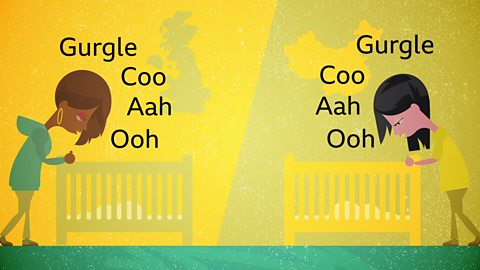At all stages of your child's development, they're testing out new ways to communicate.
Regularly responding to them, whether they're babbling, pointing, drawing or speaking, is essential to their language growth and learning that what they do has meaning.
Watch the video below to see how families respond to and connect with their little ones.
Responding across ages and stages
As your child grows, the ways you can chat with them will change. All children grow and learn at different rates, so don't worry if you can't do everything in this list yet.
Responding to babies
Did you know that babies can start to recognise the sounds of conversation as early as two months old? They may also take turns to listen and respond to with you. Even though they are still learning word sounds, they will try and respond if you leave gaps when you talk.
Try responding to their babble either by copying or making a guess at what they're trying to say. This is your baby's early attempt at communication using vocal sounds. By responding, you are showing that you are listening and that their noises are important.
Speaking in 'parentese', the higher pitch sing-song voice people often use to speak to babies, is helpful - babies often prefer hearing this way of speaking as it makes it easier to pick out the sounds that make up words.
Responding to toddlers
Eventually, your toddler might start to say a lot of single words - naming the things they can see, hear and touch. When they do, show them how to build on them - for example, if they say 'ball', you could say back 'yes a ball, you play football with a ball' or 'it's a shiny ball'.
Expanding on the words that your child knows forms new connections in their brain between different words and what they mean.
Responding to pre-schoolers
As your child gets older, they'll have so many questions about the world! They'll often ask a whole lot of 'why' questions. It may initially feel a little overwhelming, but they realise that the more they ask 'why' questions, the more adults will tell them about the things they're interested in.
Adults answering 'why' questions helps children feel safe and secure in their world, both in making sense of things and the knowledge that their interests are important. If responding to all these questions feels tricky, you can try turning the question back to them by asking in return "what do you think?" It can also help you understand why they're asking the question or what specific thing they want to know.
Responding by copying
Copying your child is a great way to respond to them and help them build their communication skills.
By copying their words, actions and sounds, you're showing them that you are listening to what they are trying to say.
You could copy them as part of a game like copying animal sounds. You could also copy their babble when they are at that stage, or if they say words, repeat them back to them as they should sound.
Copying your little one's actions and speech when playing is a great way to add responding to your routine. Copying encourages their response at and stage, leading to more back-and-forth chat.






